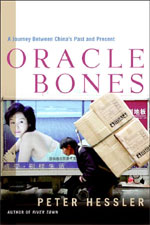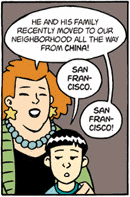Although Banqiao — spelled “Panchiao” in bastardized Wade-Giles and “Banciao” in Tongyong Pinyin — is one of Taiwan’s most populous cities, it doesn’t get much attention, overshadowed as it is by its neighbor Taipei.
To a certain degree that’s deserved: With a population of some 542,000 (which, if it were transplanted to the United States, would make it that nation’s 26th largest city), Banqiao really ought to have more of interest. But, still, it has been my home for about nine years and it isn’t completely awful. (How’s that for a recommendation?) And the city has been improving, especially with the development around the enormous new train station and the equally enormous Taipei County Government Hall. (David has a few additional photos of Banqiao. I’m amazed I have yet to run into him on the street, especially since foreigners tend to stick out here.)
Until a few years ago, street signs in Banqiao were relatively uniformly in MPS2 (often confused with the Yale romanization system), along with the usual assortment of mistakes and smatterings of other systems. Then signs in Tongyong Pinyin began to replace some but not all of those in MPS2. Last year’s elections, however, saw the DPP lose power in both Taipei County (Banqiao is the county’s largest city) and Banqiao itself. So a move toward Hanyu Pinyin can be expected — eventually. As far as I know, though, the city’s department of transportation, which is in charge of such signage, is still under the erroneous belief that the city must follow the central government’s guidelines and thus use Tongyong. Jilong (Keelung) is another example of a city under a pan-blue administration that thinks it has to use Tongyong.
For people’s reference, I have compiled a list of Banqiao street names in Chinese characters, Hanyu Pinyin (with tone marks), and the mix of romanization and English generally seen in Taiwan.
resource:
- largest Cities in the United States, 2000 Census



